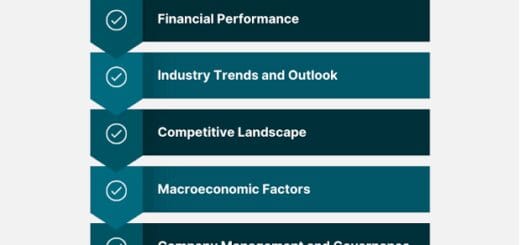Understanding American Power Conversion: Origin, Ownership, and Revenue Insights
The Origins of American Power Conversion
American Power Conversion (APC) was founded in 1981 by a group of visionary entrepreneurs, including Dave Wilson and his partners, who recognized a burgeoning need for reliable power management solutions in an increasingly digital world. From its inception, APC aimed to provide uninterrupted power supply (UPS) systems and related technologies to businesses and consumers alike, addressing the vulnerabilities associated with power outages and surges.

In its early years, APC faced significant challenges in the power management industry, which was dominated by established companies with extensive resources. The founders of APC were met with skepticism as they sought to innovate in a market that had been slow to adapt to new technologies. However, their commitment to quality and reliability allowed them to carve out a niche in the UPS segment. The company’s first major breakthrough came with the launch of their flagship product, the PRO series UPS, which garnered attention for its effectiveness in maintaining consistent power supply and protecting critical electronic equipment.
As the years progressed, APC established a reputation for excellence, marked by several key milestones that contributed to its growth. The introduction of the Back-UPS product line in the late 1980s further solidified the company’s position in the market. APC’s dedication to innovation and customer service led to strategic partnerships and collaborations, enabling it to expand its product offerings and penetrate new markets. By the late 1990s, APC was recognized as a leading provider of power management solutions worldwide, driven by the burgeoning reliance on technology and the need for uninterrupted power supply in both commercial and residential settings.
Ownership and Corporate Structure
American Power Conversion (APC) was founded in 1981 by a group of technology enthusiasts led by the vision of providing innovative power protection solutions. The company quickly gained prominence in the uninterruptible power supply (UPS) market, thanks to its commitment to quality and performance. By 2007, APC’s trajectory shifted significantly after its acquisition by Schneider Electric, a global leader in energy management and automation solutions. This acquisition marked a pivotal point in APC’s corporate structure, enabling the company to integrate into a broader portfolio of energy solutions and enhance its operational capabilities.
Post-acquisition, APC became a division under Schneider Electric, allowing it to leverage the resources and expertise of a multinational corporation. This integration has significantly influenced APC’s strategic direction, fostering innovation and expanding its reach in various markets. Schneider Electric’s emphasis on sustainability and energy efficiency has further aligned with APC’s mission, driving the development of advanced power management solutions in line with global energy trends. The influence of a larger corporate entity has also facilitated APC’s foray into emerging markets and the development of advanced technologies.
In terms of governance, the corporate structure of APC is formalized through a board of directors that includes members from Schneider Electric and select industry professionals. This diverse leadership team is tasked with steering the company’s strategic initiatives and ensuring alignment with Schneider Electric’s broader vision. Key leadership roles within APC focus on product development, marketing, and operational efficiency, prioritizing customer satisfaction and innovation. Overall, the ownership structure of American Power Conversion plays a crucial role in defining its operational strategies and capabilities in the competitive UPS sector.
Revenue Generation and Market Presence
American Power Conversion (APC) has established itself as a prominent player in the power solutions market, largely due to its diverse portfolio of products that cater to various consumer and industrial needs. Its primary revenue streams arise from the sale of uninterruptible power supplies (UPS), surge protectors, and thermal management solutions, including cooling systems. The UPS market, in particular, serves as a cornerstone for APC’s financial success, as it is essential for maintaining continuous power supply and safeguarding data integrity in environments susceptible to outages.
APC’s surge protectors also play a critical role in revenue generation, providing consumers with affordable solutions to protect electronic devices from voltage spikes. As electronics usage continues to grow across both residential and commercial sectors, so does the demand for reliable surge protection products, which fortifies APC’s standing in the marketplace. Additionally, APC’s cooling systems are crucial for industries that rely on effective thermal management to ensure optimal performance of their equipment.
The company’s robust product offerings have positioned it favorably within a competitive landscape characterized by rapid technological advances and evolving customer needs. Market analysis indicates that APC’s commitment to innovation has been instrumental in attracting a diverse clientele, spanning various sectors including healthcare, IT, and telecommunications. Focused growth strategies, such as expanding into emerging markets and enhancing e-commerce capabilities, further strengthen APC’s market presence.
Overall, the strategic emphasis on product diversity and customer-centric approaches has not only driven revenue growth but also fostered a resilient brand reputation in the power solutions industry. By continuously adapting to market demands, APC is well-equipped to navigate the future challenges of a dynamically evolving electrical landscape.
A Closer Look at Key Figures: Biography of the Founders and Leadership
American Power Conversion (APC) has a rich history shaped by the dedication and foresight of its founders and key leadership figures. Founded in 1981 by the visionaries, Michele G. Masterson and his partner, David R. Wilkes, the company sought to address a burgeoning need for reliable power solutions in an emerging tech landscape. Prior to establishing APC, Masterson was engaged in electrical engineering and had accumulated significant experience in power management systems. This background laid the groundwork for the innovative products that would soon come to define the company.
Wilkes, an accomplished businessman, possessed a keen understanding of the market, which allowed APC to quickly position itself as a leader in the industry. Combining their technical prowess and business acumen, Masterson and Wilkes spearheaded efforts to develop uninterruptible power supplies (UPS) that catered to both individual and enterprise needs. Their motivation was rooted in a shared belief that technology should empower individuals and businesses by providing dependable power solutions for critical applications.
As the company expanded, several notable leaders joined APC’s ranks, each contributing unique perspectives and expertise. One such figure is Bill A. Tharp, who served as the Chief Executive Officer in the late 1990s. Tharp’s strategic vision propelled the company toward international markets, enhancing its footprint across Europe and Asia. Under his guidance, APC not only diversified its product offerings but also established critical partnerships that facilitated growth. Meanwhile, the leadership team maintained a commitment to innovation, which was reflected in the company’s continual investment in research and development.
Over the years, these individuals have collectively cultivated a corporate culture focused on excellence, collaboration, and responsiveness to customer needs. Their combined experiences and competencies underscore the significance of visionary leadership in driving American Power Conversion’s success and shaping its historic trajectory in the power management sector.


